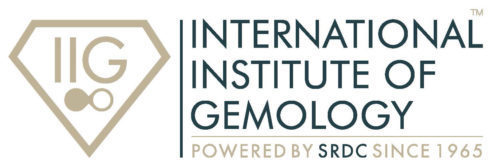History and Evolution of CVD Diamonds.
The term CVD is called Carbon Vapour Deposition. General Electric (GE) created made the first man-
made diamond. It was created by H. Tracy Hall, a General Electric chemist. The first patent for CVD
was issued in 1954. The scientists couldn’t refine the process so that it could produce gem-quality
diamonds until the 1980s. The technology was invented by the Head of the Chemistry Department
of Harvard University, Professor Roy Gordon in 1970 and his team perfected the art of creating CVD
diamonds by the 1980s.
What is CVD? How are CVD diamonds created?
Chemical Vapour Deposition (CVD) method is used to create diamonds. The diamond seed is placed
in a sealed chamber which is heated to around 800 degrees C. The chamber is flooded with carbon-
rich gas (usually methane and hydrogen) along with other gases. The gases are ionised into plasma.
The ionization breaks the molecular bonds into gases and pure carbon adheres to the diamond seed
and slowly builds up into crystal, atom by atom, layer by layer. The CVD process allows good control
of the environment in the growth chamber.
Looking for Masters In Gems & Jewellery courses ? we are here to assist you
CVD Diamond properties.
CVD diamonds have the same properties as a diamond, possessing the same internal structure,
identical chemical and physical structure, and beauty. CVD diamonds are as durable as diamonds
and the hardness is 10 on the Mohs scale. CVD diamonds are graded for Cut, Clarity, Colour and
Carat.
Market acceptance of CVD diamonds.
The natural diamond market is disrupted by the CVD diamond market currently. CVD diamond made
in the labs is generally of better quality than diamonds as they are created in a controlled
environment with monitoring and quality control. The lab-grown diamonds have used in fashion
jewellery as they can be customized and personalized as per the requirement. They are highly
economical, sustainable and environmentally friendly.
World market share of CVD Diamonds.
The global synthetic diamond market was valued at UD$ 21.4 billion in 2021. It is estimated to grow
at a CAGR of 11.5% from 2022 to 2031. The global synthetic market is expected to reach US$ 49.9
billion by the end of 2031.
The global synthetic market is classified into North America, Europe, Asia-Pacific, Middle-East and
Africa. The key manufacturers are Element Six, IIa Technologies, Applied Diamond, Jingzuan Uni
Diamond etc.
Market share and development of CVD diamonds in India.
India has emerged as the strategic market player for CVD diamonds. India has witnessed a sharp rise
in lab-grown diamond exports worth $ 1.05 billion from April 2021 to January 2022. It is growing at a
stupendous speed of 105% y-o-y and contributing to 15% of global production. In the year 2023
Union Budget, the Finance Minister of India Nirmala Sitharaman laid the foundation for the LGD
seeds. The import duty was reduced from 5% to 0%. A research grant of Rs. 242 crores was approved
for IIT Madras. This would enable India to create LGD at a very competitive price and it will promote
domestic as well as international sales, and create jobs in the industry.
IIG and CVD diamonds.
IIG is a premier institute to educate professionals in diamond grading and assorting. We also educate
students on CVD diamonds. We encourage the students to differentiate between natural diamonds
and CVD diamonds. A practical as well as theoretical approach is applied in teaching CVD diamonds.
As we are becoming environmentally conscious of the practices of mining rough diamonds, CVD
diamonds give us the choice to buy environment-friendly diamonds.
Learn about CVD diamonds at IIG’s specially curated program.
Author: Charmi Soni Shroff – CHRO
Being a part of the Gems & Jewellery industry for the last 15 years I garnered insights into gems,
diamonds and jewellery. I have authored a handbook on casting techniques and various blogs on
various methods of healing and meditation with gemstones. Presently working with IIG Mumbai as a
writer, author, external spokesperson and PR representative.

